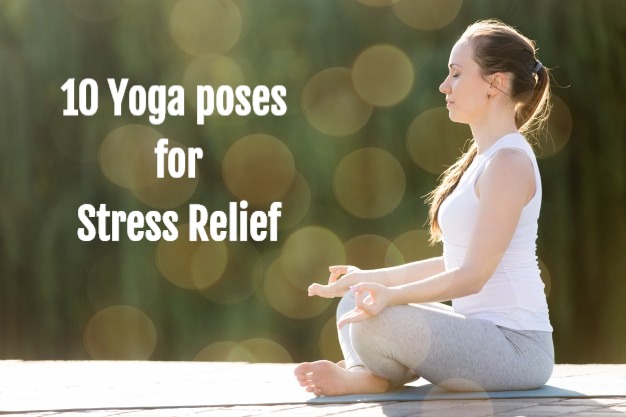Hello Friends, I know it is a tough phase in our lives, things have become so uncertain, many of us lost jobs, lost loved ones, feeling locked up in our own houses. And the uncertainty in our lives has made us restless and anxious. In this turbulent phase it is very important to include yoga in our daily routine to take care of our mental health.
At the moment, we are unable to find a proper solution and that is resulting in panic attacks/ depression/ mood swings etc. This can lead to physiological damage as well. So I would suggest that in this current situation you need to solely focus on yourself. Take some time out to improve your mental and physical health and fight this Pandemic successfully. Yes, it is true that the situation has not been easy to any individual, so, first of all, let’s take a deep breath and accept the situation instead of running away let’s face it with a positive attitude.
Believe in yourself that you can take this responsibility of improving your health. Stay committed and start feeling mentally stronger to control the effects of the situation.
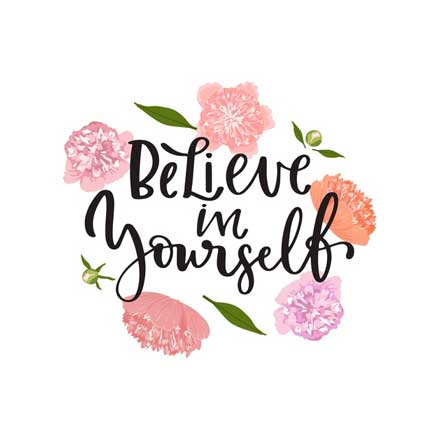
We would be focusing on Meditation, Pranayama and Yoga asana for improving our physical and mental health. Find a comfortable spot and follow the steps and guidelines mentioned.
Starting with Yogasana for better blood circulation and relax your body. Then practise pranayama (breathing exercises) to control breathing, take your mind to a positive light and fill your body with more oxygen. Lastly, practise meditation to calm and recollect your mind.
These are the areas we are going to focus on the following :
Yoga Asana for good mental health
- Warrior 2 | Virabhadrasana 2
- Humming bee | Brahmari
- Tree pose| Vriksasana
- Childs pose | Balasana
- Legs up the wall | Viparita Karani
- Happy Baby Pose | Ananda Balasana
Yoga Breathing for good mental health
- Alternative Nostril breathing | Anulom Vilom
- Humming Bee
Meditation for good mental health
- Scan your body.
- Scan your environment.
Yoga Asana for good mental health
When we practise Yoga, it stretches our rigid muscles and relaxes them. It activates our whole body and increases blood circulation.
Each pose should be maintained for 3-5 breaths (10 seconds) and ease out. focus on your body while practising yoga, feel the stretch.
1. Warrior 2 | Virabhadrasana 2

Steps:
- Stand straight and keep a 3ft distance between your legs.
- Turn your right leg to a 90-degree angle and the left leg be kept in a comfortable angle
- Then turn your upper body to your right side and bend a little, folding your right leg and left leg straight.
- Raise your hands by your side and hold the pose for 30 seconds
- Repeat the same on the other side too
- You can gradually increase the time of holding the pose can repeat the same after taking some rest.
Precautions:
- Avoid this pose if you are suffering from high blood pressure and any heart problems.
- Avoid this pose if you recently suffered from Diarrhoea.
- Use some support if you have any knee-related issues, like any kind of injury or arthritis.
2. Wheel Pose | Chakrasana

Steps:
- Lie on the floor and bend your knees.
- Maintain a distance between your feet.
- Bend your elbows, but your palm placed on the floor and fingers pointing your feet, the exact way how it is shown in the reference image above.
- Take a deep breath and pull your abdominal up, take the support of your feet and palm to maintain the pose.
- Stretch yourself as much as possible.
- Hold the pose for 3 breaths.
- Slowly resume the pose by lowering your abdominal and placing it on the floor, avoid sudden jerks and falling on the floor.
Precautions:
- Avoid the pose if you have a back or neck injury.
- The pose might be a little complicated for beginners, but not impossible, thus take your time to achieve this pose.
3. Tree pose | Vriksasana

Steps:
- Stand straight with both your legs well balanced.
- Raise your feet and place it on your inner thigh of another leg, above knees.
- Your whole sole area of the raised leg should be touching the inner thigh
- Maintain a balance on one leg might be difficult, try putting a right and balanced amount of weight on the body parts.
- Raise your hands above your head and let your palm face each other, and then brought close to each other, joining.
- Maintain the balance and hold the pose as long as possible, practice it every day and try keeping a goal of maintaining the pose for 1 minute.
Precautions:
- Never place your feet exactly on the side of the knees, as the pressure would damage your knee, thus it should be always placed above knees in the inner thigh area.
- If you are suffering from high blood pressure, do not keep your hand above your head, place them near your chest.
- Avoid this pose if you are suffering from insomnia or migraine.
4. Childs pose | Balasana
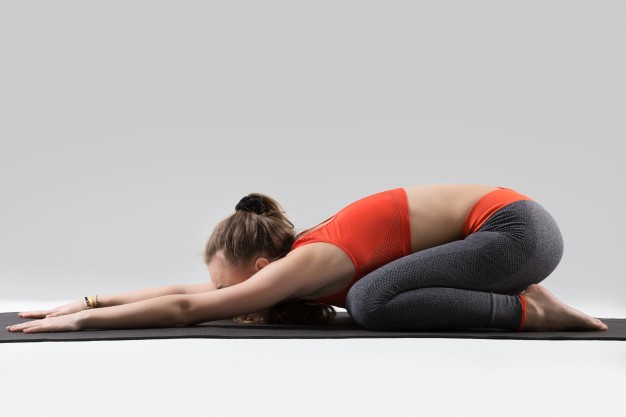
Steps:
- Kneel on your knees and keep your knees at a distance parallel to your hips.
- Bend down and let your palm touch the floor.
- Stretch your hands as much as possible.
- Let your face position itself between your hands and touch the floor.
- Now let your buttocks touch your heels slowly.
- Keep breathing slowly, focusing on your breathing.
- Stay in the same position for 30 seconds for beginners, later you can increase the time up to 2-3 minutes.
Precautions:
- Avoid this pose if you are suffering from diarrhoea.
- If you are pregnant, then spread your knees wider and do not apply more pressure on the abdominal area.
- Avoid child pose if you have any knee injuries.
5. Legs up the wall | Viparita Karani

Steps:
- To perform this pose, you need to find a space near a wall.
- Sit in front of the wall and lie down and keep your knees bend.
- Keep your hands by your side and raise your legs and let it touch the wall.
- Maintain distance between your buttocks and the wall so that you can push it to stretch more.
- Make sure your back and head are resting on the floor, making a 90-degree angle.
- If needed, use your hands to support your hips and form a curve in your lower body.
- Do not put pressure on your neck.
- Close your eyes and breathe. Hold the position for at least five minutes. Relax and roll yourself on any side.
Precautions:
- To be avoided during menstruation.
- Avoid practising this pose if you have eye problems like glaucoma.
- If you notice a tingling in your feet when you practice this pose, bend your knees and touch the soles, bringing your heels close to the pelvis.
6. Happy Baby Pose | Ananda Balasana

Steps:
- Lie on your back.
- Bend your knees into your belly after exhaling.
- Then inhale deeply and hold your feet with your hands.
- Open your knees slightly wider than your torso and bring them up toward your armpits.
- Keep pulling your hands down gently to create resistance.
Precaution:
- A pregnant woman should avoid this pose.
- Avoid this pose if you are suffering from any kind of knee injury or neck injury.
Yoga Breathing for good mental health
When things feel out of control and there is too much chaos out there, try finding please through pranayama. To get control over things will make us feel less anxious. Thus taking control over our breath makes us feel better and when there is more oxygen inhaled, the brain works efficiently.
1. Alternative Nostril Breathing | Anulom Vilom

Steps:
- Sit comfortably on your mat and sit straight so that your back, neck and head are aligned.
- Let your left-hand rest on your left knee.
- There is this particular hand pose that one has to perform with his right hand. There is a reference image. You have to curl up your index and middle finger and let the other fingers be open and not curled up.
- Maintaining the same hand pose, use your thumb to press your right nostril and inhale deeply from your left nostril.
- Hold your breath for 5 seconds and then press you left nostril with your ring finger and lift your thumb from your right nostril and exhale slowly.
- Keep repeating this 15-20 times.
Precautions:
- Avoid practising it if you are suffering from high blood pressure or any heart disease.
2. Humming bee | Brahmari

Steps:
- Sit comfortably in a quiet place and breathe deeply.
- Close your eyes and keep repeating a word, for some people, it is easier to focus on a word than on breathing patters.
- Keep focusing on the word as you chant the word. That word/sound can be of your choice (OM)
- Repetitive sounds clear the mind keeps you more alert and in tune with your environment.
- Allows you to experience deeper levels of awareness.
- Keep practising until you feel better. Practice every day for the benefits.
Yoga Dhyana (meditation) for good mental health
Meditation is practised to get control over our thought process. Asking our minds to focus on specified things helps. The triggering thought is kept away for a while, which calms down our body and we are in a better position to take in charge and maintain our mental health for the day.
1. Scan your Body
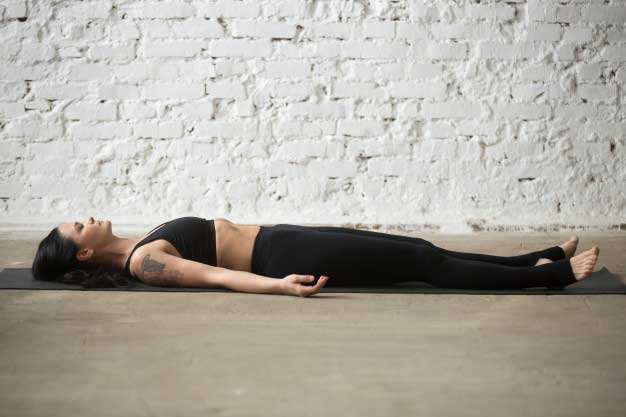
Steps:
- Place yourself in a relaxing position.
- In this type of meditation, one must focus on the entire body and nothing else.
- So, after settling yourself, close your eyes and breathe deeply.
- First, focus on your toes, move them a little and focus on the toes.
- Then, observe your ankles, observe them while moving them clockwise and anti-clockwise.
- Keep breathing and gradually move up and feel your calf muscles and knees.
- Then, let your focus shift to the thighs and buttocks.
- After doing so, attend your abdominal area, observe its movement while you are breathing.
- Observe your chest and diaphragm moving while inhaling and exhaling.
- Now, focus on your shoulders and arms till your fingertips.
- Then focus on your neck for a while and then your head.
- You can repeat the same from head to toe again.
- Repeat this process until you feel better.
2. Scan the Environment.

Steps:
- Sit outdoor or sit comfortably facing a window.
- Close your eyes and focus on your breathing until you feel calm and composed.
- Open your eyes and notice 5 things around you that you can see clearly.
- Notice 4 things around you that you can hear.
- Notice 3 things around you that you can feel.
- Notice 2 things around you that you can smell.
- Lastly, notice 1 thing that is around you and you remember how it tastes.
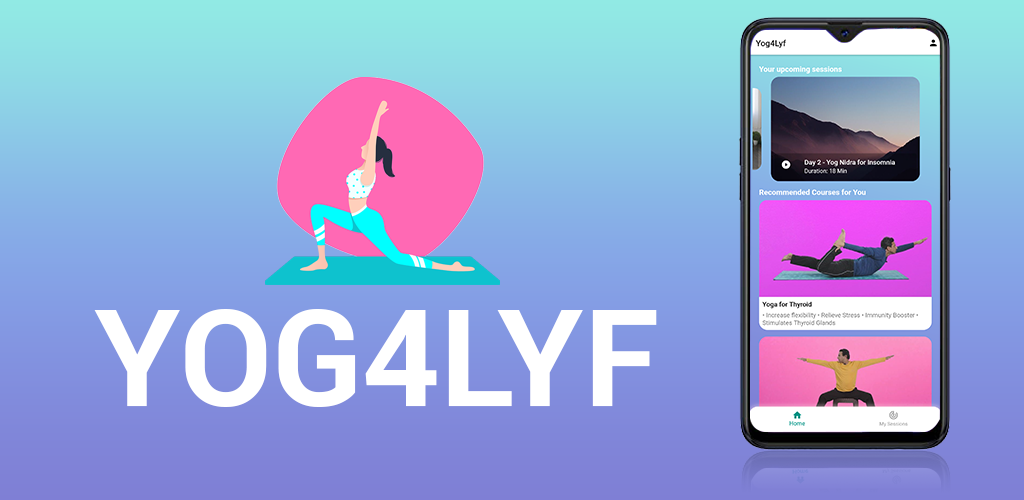
Practise all of these basic Yoga every day and you will notice a difference, hoping to find a better version of ourselves.
